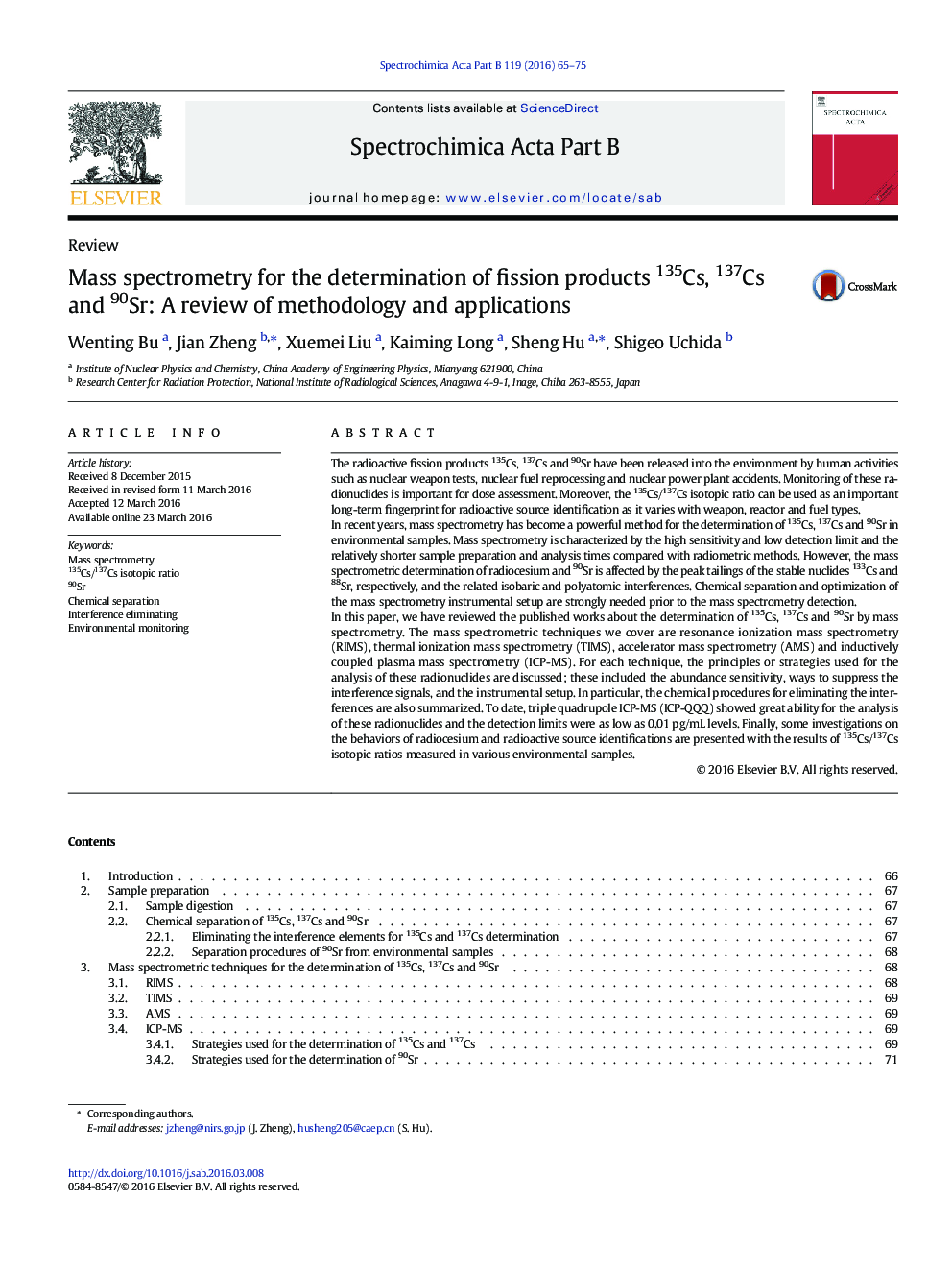| Article ID | Journal | Published Year | Pages | File Type |
|---|---|---|---|---|
| 1239455 | Spectrochimica Acta Part B: Atomic Spectroscopy | 2016 | 11 Pages |
•Sample preparation methods for 90Sr, 135Cs and 137Cs determination are reviewed.•Strategies employed on different mass spectrometries for 90Sr, 135Cs and 137Cs analyses are summarized.•Advantages and drawbacks of various mass spectrometry techniques are compared.•Significant applications of mass spectrometry for 135Cs/137Cs isotopic ratio determination are highlighted.
The radioactive fission products 135Cs, 137Cs and 90Sr have been released into the environment by human activities such as nuclear weapon tests, nuclear fuel reprocessing and nuclear power plant accidents. Monitoring of these radionuclides is important for dose assessment. Moreover, the 135Cs/137Cs isotopic ratio can be used as an important long-term fingerprint for radioactive source identification as it varies with weapon, reactor and fuel types.In recent years, mass spectrometry has become a powerful method for the determination of 135Cs, 137Cs and 90Sr in environmental samples. Mass spectrometry is characterized by the high sensitivity and low detection limit and the relatively shorter sample preparation and analysis times compared with radiometric methods. However, the mass spectrometric determination of radiocesium and 90Sr is affected by the peak tailings of the stable nuclides 133Cs and 88Sr, respectively, and the related isobaric and polyatomic interferences. Chemical separation and optimization of the mass spectrometry instrumental setup are strongly needed prior to the mass spectrometry detection.In this paper, we have reviewed the published works about the determination of 135Cs, 137Cs and 90Sr by mass spectrometry. The mass spectrometric techniques we cover are resonance ionization mass spectrometry (RIMS), thermal ionization mass spectrometry (TIMS), accelerator mass spectrometry (AMS) and inductively coupled plasma mass spectrometry (ICP-MS). For each technique, the principles or strategies used for the analysis of these radionuclides are discussed; these included the abundance sensitivity, ways to suppress the interference signals, and the instrumental setup. In particular, the chemical procedures for eliminating the interferences are also summarized. To date, triple quadrupole ICP-MS (ICP-QQQ) showed great ability for the analysis of these radionuclides and the detection limits were as low as 0.01 pg/mL levels. Finally, some investigations on the behaviors of radiocesium and radioactive source identifications are presented with the results of 135Cs/137Cs isotopic ratios measured in various environmental samples.
